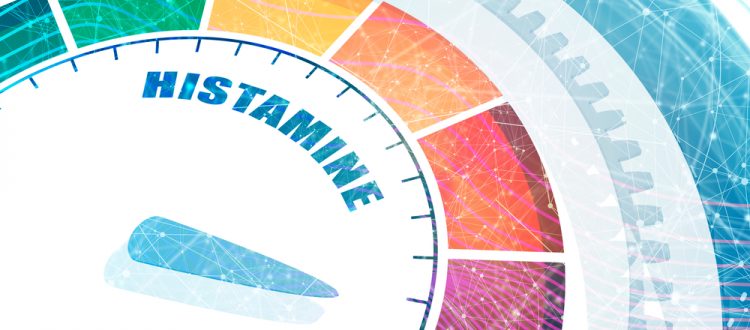Chronic allergies and histamine intolerance. How your genes play a role
Histamine is a key chemical mediator that mast cells release during an allergic response. Histamine causes a local and systemic effect, setting off a widespread domino effect that impacts many different systems in the body, including the skin, intestinal lining, mucus membranes, cardiovascular system, nervous system and reproductive organs. Histamine is responsible for producing common allergic symptoms, including itching, sneezing, inflammation, and anaphylaxis. In addition, histamine can create long standing symptoms and histamine intolerance.
Symptoms associated with histamine intolerance
- Gastrointestinal disorders – constipation, diarrhea, IBS and SIBO, gastric ulcer, ulcerative colitis
- ADHD, anxiety
- Atopic skin, urticaria, flushing
- Headache, migraine and other vascular headaches
- Abnormal menstrual cycle
- Hypotension, arrhythmia
- Chronic fatigue, difficulty falling asleep
- Muscle pain, fibromyalgia
- Nasal congestion, nasal polyps, difficulty breathing
- NSAID sensitivity
Once histamine is released, it is broken down by the body through several mechanisms. However, genetic predispositions can decrease the efficiency of histamine removal and ultimately contribute to histamine accumulation and persistence of symptoms.
- The DAO gene produces diamine oxidase (DAO), which is the main enzyme for the metabolism of ingested histamine.
- The HNMT gene encodes histamine N-methyltransferase, which is found in the cytosol to inactivate histamine within the cell.

Maintz, L. & Novak, N. Histamine and histamine intolerance. Am J Clin Nutr 85, 1185–1196 (2007).
Continual environmental triggers, such as allergens and mold, along with poor mast cell deactivation and histamine degradation leads to persistence of symptoms. In order reduce the total histamine burden, a reduction in environmental triggers, stabilization of mast cells and supplementation to enhance enzyme activity, effectively compensating for genetic predispositions, are key to management.
Strategies to lower histamines:
- Eat a low histamine diet – go to the link for a list of foods to avoid https://test.dnalabs.ca/foodtables#histaminerichfoods
- Supplement with DAO enzymes – for those with the DAO gene at-risk allele, supplementing DAO enzymes decrease histamine in the digestive tract, subsequently reducing systemic levels
- Natural antihistamines such as vitamin C, stinging nettle, bromelain, quercetin, and MSM
- Gut health – address intestinal hyperpermeability and consider histamine lowering probitoics, such as L. rhamnosus
- Reduce stress – stress contributes to mast cell degranulation
- Proxisome proliferator-activated receptor γ (PPARγ), which is a member of the nuclear hormone receptor superfamily, plays a role in stabilizing mast cells, and PPAR agonists (natural or prescription) may be a novel approach to reducing histamine symptoms in those who do not respond to treatment.
- Support methylation – SAMe is the methyl donor for the HNMT enzyme. Check the methylation card in the LMH panel to at-risk alleles that decrease the availability of SAMe and requirement of methylation cofactors, including vitamin B12, folate, vitamin B6, vitamin B2, magnesium, and zinc. (Note: due to systemic effects of methylation donors, I recommend this last after the above strategies to reduce the likelihood of side-effects)
References:
- Maintz L, Novak N. Histamine and histamine intolerance. Am J Clin Nutr. 2007 May 1;85(5):1185–96.
- Tachibana M, Wada K, Katayama K, Kamisaki Y, Maeyama K, Kadowaki T, et al. Activation of peroxisome proliferator-activated receptor gamma suppresses mast cell maturation involved in allergic diseases. Allergy. 2008 Sep;63(9):1136–47.

Dr. Robyn Murphy, ND
Scientific Advisory Board Member

